Rane ME 15 Bedienungsanleitung
Lies die bedienungsanleitung für Rane ME 15 (6 Seiten) kostenlos online; sie gehört zur Kategorie Mischer. Dieses Handbuch wurde von 2 Personen als hilfreich bewertet und erhielt im Schnitt 4.5 Sterne aus 1.5 Bewertungen. Hast du eine Frage zu Rane ME 15 oder möchtest du andere Nutzer dieses Produkts befragen? Stelle eine Frage
Seite 1/6

ME 15 and ME 30
OPERATING
AND
SERVICE MANUAL

II. PANEL DESCRIPTIONS
FRONT PANEL DESCRIPTION
1. POWER SWlTCH: As you have astutely surmised by now, this switch powers up the ME 15 or
ME 30. Note: “power” in this context refers to electrical power, as opposed to political,
financial (often related to the previous), psychic or supernatural.
2. FILTER LEVELSLIDE CONTROLS: Each of these sliders controls the output level of each of
the 30 bandpass filters. Center position is grounded for guaranteed flat response.
3. FILTER RANGE SWITCH: The gain range of the filter sliders is switchable (as a group) from
±6 dB for high resolution, to ±12 dB for maximum boost/cut capability.
4. BYPASS SWITCH: When the red LED is lit, this indicates that the unit or channel is in the
bypass mode: signal is routed directly from the input to the output without passing through
any active circuitry (often referred to as “hard-wire bypass”). Use this switch to compare
equalized and un-equalized material, or to bypass the EQ section in the event of power loss or
unit failure.
5. OVERLOAD INDICATOR: This red LED lights up if any section of the ME 15/30 is within 4 dB
of clipping. Occasional blinking of this LED is acceptable, but if it remains on more than
intermittently you should turn down either the equalizer’s level control(s) or reduce the
output level of the preceding component to avoid audible distortion.
6. LEVEL CONTROL: This controls the level of signal coming into the ME 15 /ME 30. Turn this
control down if the Overload LED lights up steadily (meaning too strong an input signal). Since
actual unity gain depends on varying slider settings (which is why we have not marked a unity
gain position on the front panel), use the bypass switch to determine the exact unity gain
position of this level control by comparing EQ and bypass volumes.

REAR PANEL DESCRIPTION
1. INPUT JACK: This is a stereo 1/4" jack which will accommodate either balanced or
unbalanced input signals. For unbalanced signals use a mono 1/4" plug (single conductor with
shield). For balanced signals use microphone cable (two conductor with shield) with a stereo
1/4" plug on one end for the ME 15/30, wired as described below, and either a stereo 1/4" or
three-pin connector as dictated by the signal source on the other end. Rane adheres to the
international and U.S. standard for balanced pin configurations:
Pin #1 = Case ground (Neutral) = Sleeve on a 1/4" connector
Pin #2 = Hot (Positive) = Tip on 1/4" connector
Pin #3 = Signal Ground (Negative) = Ring on 1/4" connector
2. OUTPUT JACK: This is a stereo 1/4" “floating” output which is compatible with either
balanced or unbalanced systems. For balanced systems, use a microphone cable wired as
explained in #1 above.
IMPORTANT: For unbalanced operation, do not use a mono plug (single conductor with
shield) but rather a microphone cable (TWO conductor with shield). Although a mono cord
will work, there is a much greater possibility of hum or buzz creeping into the system with this
type of cord. To minimize hum or buzz problems, wire a microphone cable as shown below
with the following configuration:
From ME 15/30
Tip
Ring
Sleeve (Shield)
TO
Unbalanced Equipment
Tip
Sleeve
Sleeve
The theory here is to GROUND THE SHIELD ONLY AT THE RECEIVING END OF THE CABLE.
The sleeve connection at the output of the ME 15/30 is not connected internally (thus the
term “floating”). For further information on grounding systems ask your dealer for a free copy
of Rane Note 110 entitled “Sound System Interconnection”.
Produktspezifikationen
| Marke: | Rane |
| Kategorie: | Mischer |
| Modell: | ME 15 |
Brauchst du Hilfe?
Wenn Sie Hilfe mit Rane ME 15 benötigen, stellen Sie unten eine Frage und andere Benutzer werden Ihnen antworten
Bedienungsanleitung Mischer Rane
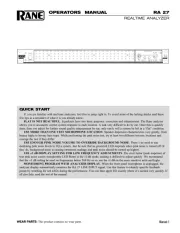
6 Juli 2025
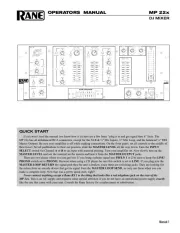
6 Juli 2025

6 Juli 2025
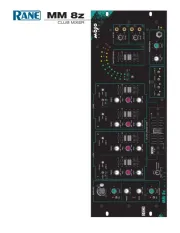
6 Juli 2025
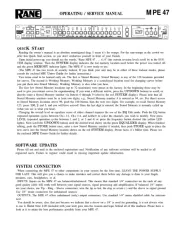
6 Juli 2025
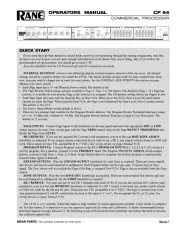
6 Juli 2025
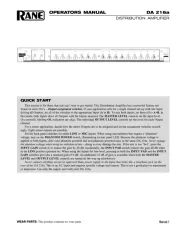
6 Juli 2025
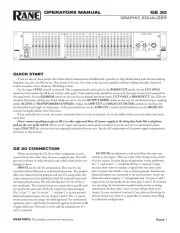
5 Juli 2025

5 Juli 2025
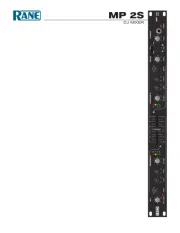
5 Juli 2025
Bedienungsanleitung Mischer
- Lindell Audio
- JTS
- Bartscher
- Krups
- Danby
- Hitachi
- Emerio
- Koenic
- Renkforce
- Golden Age Project
- Inventum
- Fakir
- Trebs
- Ufesa
- WMF
Neueste Bedienungsanleitung für -Kategorien-
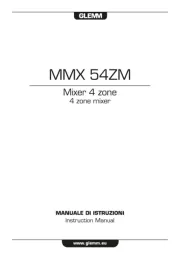
5 Juli 2025
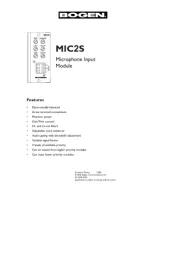
25 Juni 2025
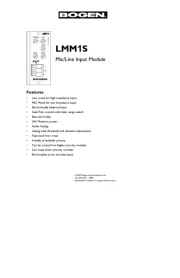
25 Juni 2025
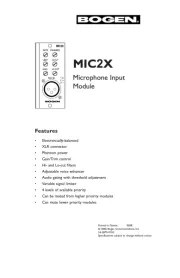
25 Juni 2025
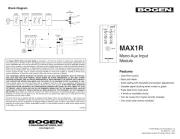
25 Juni 2025
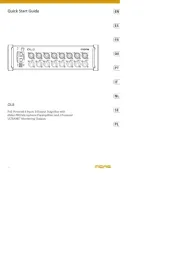
23 Juni 2025
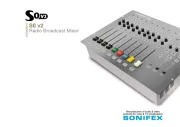
19 Juni 2025
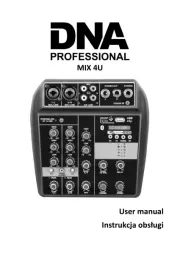
18 Juni 2025
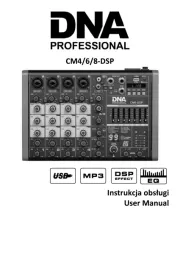
18 Juni 2025
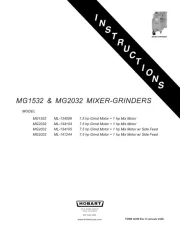
18 Juni 2025